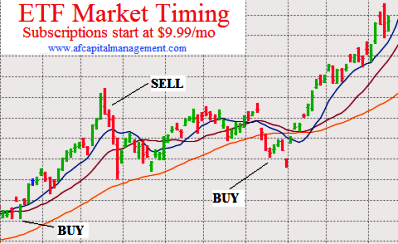I had a good exchange with a reader in the comments of a post from the end of July. He asked a good question that made me realize that a lot more people are probably wondering the same thing. In essence, he asked how does selling puts work.
Since selling options, mainly selling puts, is the foundation of my trading model, I figured it deserved a post of its own. Before trying to understand why someone would sell a put one needs to understand why someone would buy one. A buyer of a put is buying the right to sell a stock at a predetermined price (the strike) for a predetermined time (expiration). The other side is what I do. I sell the right (ie, enter into a “contract”) to someone else to force me to buy a stock (have it assigned) to me at that price before the contract expires.
Most of the way I’ll describe puts is based on the options being sold as “naked puts”. A naked put is a put option that is not “covered” by previously shorting the stock. A covered put includes two trades, one is to sell the underlying stock that you don’t own and then to sell a put to someone who then has the right to sell the stock to you at a previously agreed upon price. This isn’t my focus, so I’m only mentioning it as a point of reference.
Stick with me, it’s less complicated than you might think. A buyer is willing to pay the seller (the writer of the contract) the fee (premium) because she thinks the stock might be going down. She might be buying insurance for a stock she owns and will limit her losses if it does drop since she can sell it back to me at the then higher price that we agreed on. If she isn’t buying the put for insurance, she could be buying it because she thinks the stock is going down. In essense, she’s shorting the stock without the risk of losing more money than what she paid for the put if the stock goes up.
A put seller thinks the stock will either stay flat or go up. If the put is sold with a strike below the current price it is said to be out-of-the-money (OTM). Selling a put out of the money means the stock can decline in price some without the seller taking a loss. If the put expires without being below the strike (aka in-the-money or ITM) I keep the entire premium and do not have to buy the stock. Basically I sold high and didn’t even have to buy low as it becomes worthless. Sometimes I’ll buy the put back before expiration to keep from having the stock assigned to me. If I’ve timed it well, I can buy it at a lower price than I sold it even if the stock’s price is lower than the contract’s strike.
Sometimes the price of the stock goes down before I have a chance to get out of my position. This doesn’t mean that I have taken a loss. A stock’s price can move up and down as it usually does before expiration and typically will not entice the buyer to exercise their right to assign the stock to me early. Many buyers will hold on for what they hope is a bigger gain (bigger loss for me) or they want to just keep the insurance in place while the stock picks a direction.
Being assigned the stock does happen sometimes, such when the strike is above the stock’s current price and the buyer thinks it may not be coming back up. She will assign the stock to me, forcing me to buy and while getting her money back from the stock at the higher price. She has made a wise move if the stock stays at that lower price and she has cut her losses or saved her profit. In this case, as a put seller, I have the decision to make if I should cut my losses and sell the stock for a loss, hold on and hope it rallies or hold the stock AND write a covered call on it thereby reducing my cost further. By selling (writing) a covered call I am selling someone the right to buy the stock from me at an agreed upon price. (Covered call writing will be covered in another post.)
If the put buyer was using the option for insurance, she might sell the put I sold to her to someone else on the open market and hold the stock as it rallies. In this case she could make money on both sides, the option and the underlying stock. A put seller cannot be forced into buying the put back. A put seller can only be forced to buy the stock.
I have made a wise move if I have the cash available to support buying the stock and believe the stock will rally. If I believed the stock was doomed to fall more, I should have bought the put back already, unless the stock fell faster than I could react.
To read more about the common misperceptions and risks of selling puts, click here.
Technorati Tags: naked puts, investing, stocks, options, options strategies, trade, finance


That reader would be me. Excellent post-puts everything in clearer perspective.
Thanks for the idea Pete! I had fun writing it and even saw that the Wall Street Journal referenced this yesterday from their online edition.